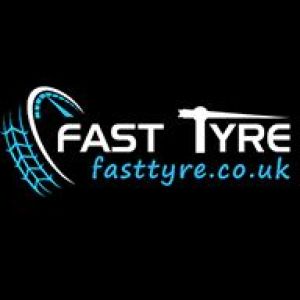4x4 Tyres Are A Must-Have For Off-Road Touring.
Posted by Fast Tyre on August 17th, 2022
One of the most crucial decisions a four-wheel driver can make is selecting the proper tyres, particularly when setting up a vehicle for touring.
Most road tyres give efficiency, speed, and a more comfortable ride. However, 4x4 tyres also provide more traction, durability, and stability. Understanding your tyres is crucial. Due to their tough tread pattern, deeper tread depth, high rubber ratio, and reinforced sidewalls, 4x4 Tyres Barnet offer increased steering precision on challenging terrain.
Construction
A significant portion of contemporary 4x4s often have passenger car (P) construction tyres. Despite their substantial appearance, these have a light body and thin sidewalls and tread areas. Tyres with flexible sidewalls disperse heat better and have longer tyre lives thanks to light construction. Additionally, a lighter vehicle has better acceleration, braking, and fuel efficiency
These advantages on public roads work against passenger car tyres off public roads, where the light carcass is vulnerable to injury from projectiles. Upgrade to Light Truck (LT) construction tyres if you plan to travel a lot on dirt or off-road, as their heavier design offers superior puncture resistance.
Each tyre type's construction is prominently stated on the sidewall. Light Truck tyres will be usually marked with "LT" before to the size (e.g., LT265/65R17), while Passenger Car tyres will be actually marked with "P" or have no marking at all before the size listing.
The terms "265" and "65" in the examples above denote the tread width in millimetres, "R" denotes radial construction, "17" denotes the wheel diameter, and "Aspect Ratio" denotes the sidewall depth as a percentage of the tread width (in inches).
Tread Design
Although there are numeroustread patterns available, they are generally divided into three groups: mud terrain (M/T), all terrain (A/T), and highway terrain (H/T). Depending on the types of driving conditions you're likely to experience, you can choose the one that best suits your needs.
If you plan to do the most of your driving on sealed roads, H/T tyres will offer the best traction in both dry and rainy weather. Additionally, they make less noise than tyres with a more aggressive tread pattern, and it's possible that they may have reduced rolling resistance, which could lead to greater fuel efficiency and longer tyre life.
They won't perform as well off-road due to its closed-in tread design, which may have trouble gaining traction and clearing mud and debris.
On the other end of the spectrum, M/T tyres have wide-open tread blocks that allow for easier mud clearing and better traction in slick off-road conditions, but they can be noisy on the road and have a shorter lifespan than H/T or A/T tyres.
A/T tyres are a middle ground between highway and mud tyres, making them the perfect choice for long distance highway trips as well as moderate off-road driving.
Tyres Size
If you damage a tyre beyond repair, it will be simpler to acquire a replacement in local markets the more widely used the tyre size. Although many 4x4 tyres today are mainly equipped with the 265/65R17 size, there are still plenty of 15-inch, 16-inch, and even 18-inch L/T tyres available.
Ask the dealer whether a different size is available if the 20-inch rims that come standard on your new car are flashy-looking. As a free option, some manufacturers provide a reduced rim diameter.
Technicalities
You must follow certain guidelines when mounting larger tyres on your 4x4. In the vast majority of Australia, it is now understood that you can boost a vehicle's height by a total of 75mm—50mm through suspension and 25mm through a larger set of tyres.
Be sure to consult your insurance provider and your state's governing body, though, before you go up a size. Be mindful that heavier, larger-diameter tyres can impair a vehicle's performance and gearing.
If the driver doesn't go faster than the speed specified on the vehicle's tyre placard, you can install a different speed rating tyre. "N" (140 km/h) is the lowest speed rating for off-road tyres.
Never ever install a tyre on your car that has a lower load rating. A Tyres Barnet tyre's sidewall displays both the load index and speed rating.


